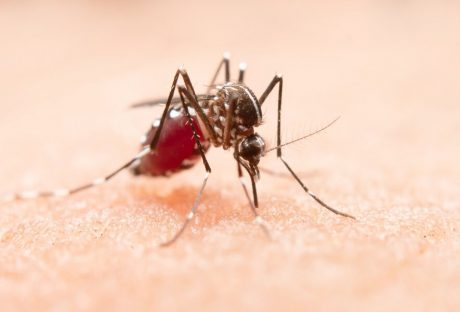The integration of therapy and activities in residential treatment facilities is a pivotal aspect of modern mental health care. This approach combines traditional therapeutic methods with various activities, enhancing the effectiveness of treatment and providing a more holistic recovery experience for residents.
In residential treatment settings, therapy remains the cornerstone of the recovery process. This typically involves a combination of individual and group therapy sessions, utilizing various psychotherapeutic techniques and other evidence-based practices. These therapies are designed to address the underlying causes of mental health issues, helping residents develop coping mechanisms and better understand their conditions.
Integrating activities alongside therapy adds a crucial dimension to the treatment process. Activities in residential treatment facilities can range from physical exercise, such as yoga or swimming, to creative endeavors like art or music therapy.
These activities are not merely recreational; they are carefully chosen for their therapeutic benefits. For instance, physical activities can help reduce anxiety and depression symptoms, while creative therapies offer a non-verbal outlet for expression and emotional exploration.
One significant benefit of integrating activities into treatment is the enhancement of therapy effectiveness. Engaging in activities can help residents apply and reinforce the skills learned in therapy sessions. For example, participating in a group sport can improve social skills and teamwork, reflecting the interpersonal skills taught in group therapy.
Another advantage is the promotion of a holistic approach to wellness. Mental health is intrinsically linked to physical and emotional well-being. Activities like mindfulness meditation or nutritional workshops contribute to overall health, which is crucial for mental health recovery. These activities encourage residents to adopt healthier lifestyles, which can have long-lasting benefits beyond their time in the facility.
The diverse array of available activities further enhances the personalization of the treatment experience. Recognizing that residents have unique interests and respond differently to various activities, offering a wide range of options ensures that each resident can discover activities that deeply resonate with them.
This approach not only tailors the treatment experience to individual preferences but also boosts resident engagement and enjoyment, fostering a more meaningful and effective recovery journey. The variety of activities becomes a dynamic tool in creating a therapeutic environment that accommodates diverse needs and promotes holistic well-being.
Incorporating activities into residential treatment also fosters a sense of community and belonging among residents. Participating in group activities builds camaraderie and support, essential elements in the recovery journey. It creates opportunities for residents to form meaningful connections with others who share similar experiences.
Moreover, these activities provide practical skills and hobbies that residents can continue after leaving the facility. Skills learned through activities such as gardening, cooking, or painting can be valuable tools for stress management and self-care in daily life.
Integrating therapy and activities in residential treatment offers a comprehensive approach to mental health recovery. This integration enhances the effectiveness of traditional therapies, promotes holistic wellness, allows for personalization of the treatment experience, builds community, and equips residents with practical skills for life post-treatment.
What Is Integrative Therapy?
Academics have argued that psychotherapy and psychology are essentially different. According to them, treatment takes a backseat because of the insistent modalities. We define ourselves in a certain way and set up “false dichotomies when, in practice, we routinely straddle multiple approaches.”
Integration is a term that suggests the bringing together of things. When dealing with clients, it suggests that we adapt to both the needs of clients and their context by blending fragmented theoretical frameworks as well as their methods.
Human beings are complex, and they bring unique hopes, needs, and challenges to therapy. A therapist’s chief challenge lies in attempting to make an honest integrative therapy that amalgamates different philosophical commitments, assumptions, and values. They must also admit that not all of these practices and theories can be compatible.
So, when integrative therapists treat their clients, they must consider the what, how, and when of integration. This would typically involve one of the four potential approaches.
Theoretical integration: Transcends the individual models by making a single model
Technical eclecticism: Combines the effective bits of different approaches
Assimilative integration: Works mainly in a single model whole, also integrating several aspects of other approaches
Common factors: Focuses on the right practices as well as elements from all approaches
History of Integrated Therapy
Human interest in therapeutic integration dates back as far as Freud and the contemporaries of the father of psychology in the early 1900s. Sandor Ferenczi, a relational psychoanalyst from Hungary, wrote a paper in 1933. He argued that instead of staying too true to the stereotypical techniques, we must take our cues from the patient and adopt the most suitable approach at a time in the best interest of the patient.
Aaron Beck claimed in 1991 that cognitive behavioral therapy could actually be integrative therapy. He said that because of the broad sweep of psychology and the resulting integration of different technical procedures, cognitive therapy is integrative therapy.
It is possible that we can challenge his claims today, but CBT is a prime example of the combination of two or more approaches. In that case, the awareness of the client’s belief system going through a change can improve the therapist’s efforts on their behavioral change.
Holistic Therapy and Integrative Therapy Partnerships
The combination of integrative therapy and holistic therapy has repeatedly proved to be effective and valuable in palliative care. It helps clients deal with their discomfort, pain, anguish, and fear related to their past, present, and future.
When traditional Western medicine cannot help the chronically and terminally ill, treatments like imagery, therapies, and meditation, along with psychotherapy, tend to offer hope for them. Their needs for peace and calm at nearly the end of their lives are met with a lot of help.
Other approaches, when combined with integrated psychotherapies, get into the details of theology, spirituality, religion, and existential motives.
Wrapping Up
Integrated therapy offers a strong and flexible approach to psychotherapy that addresses each client’s complex as well as unique needs. It aims to help create a comprehensive framework that will prioritize effective dialogue between different approaches by bringing together techniques and theories from various psychological models.
Read Also:























All Comments
Gluco Relief fda approved
Nice post. I learn something totally new and challenging on websites